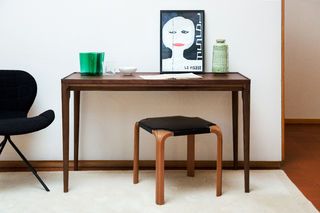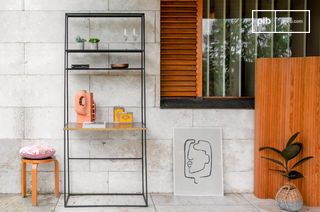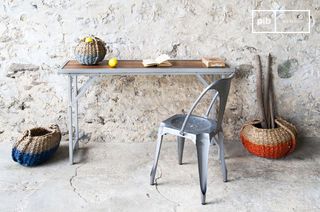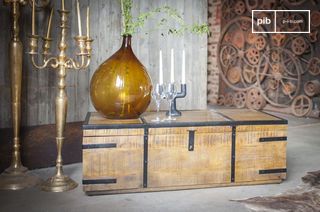Office desks
Office tables form the functional basis of any workspace. Their format, height and equipment must meet specific needs: writing, computing, document organization. A well-chosen office table is a logical choice in terms of ergonomics, circulation and space management. Materials, usable width and storage devices vary according to the context: telecommuting, professional use, dedicated room or optimized room corner.
read more >Filters
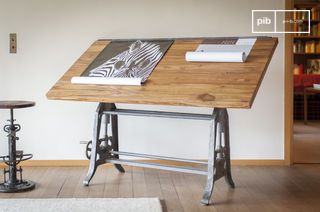
Teak architect table1928
£2045 £1840-10%
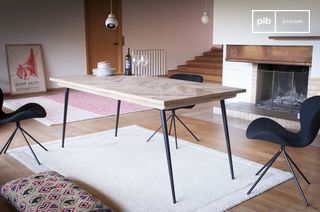
Solid wood dining tableTongeren
£1090 £980-10%
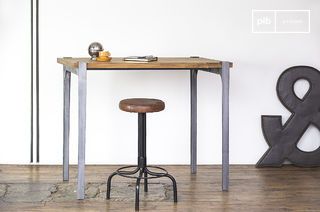
Solid wood high tableWellington
£785 £705-10%

Industrial desk-librarySeattle
£1560 £1400-10%
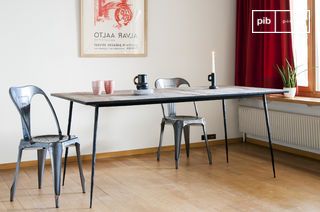
Wood and metal dining tableSherman
£1655 £1490-10%
10 festive days
10% off our tables and consoles
Welcome your guests in style · Limited stock
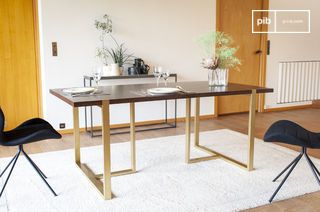
Walnut dining tableNeutra
£950 £855-10%
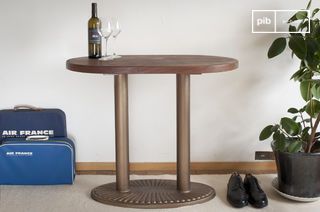
Small oval wooden dining tableWashington
£705 £635-10%

Functionality and organization of an office table
Choosing an office table involves assessing the expected uses: fixed computer workstation, writing surface, filing area or place for occasional meetings. These functions determine the format of the tabletop, the working height and the presence or absence of integrated elements (drawers, grommets, niches). Unlike general-purpose furniture, the office table is subject to precise functional constraints that must be defined in advance.
The minimum width recommended for everyday use is 120 cm, to accommodate a computer, lighting and additional supports. A depth of at least 60 cm guarantees sufficient clearance between the user and the screen, while leaving room for manual use (keyboard, notebook, tablet). Some narrow models (90 cm) may be suitable for occasional work or restricted space, provided that surface clutter is kept to a minimum.
Typologies, formats and materials
Desk tables come in a variety of configurations, depending on space and technical constraints. the simple model: top and base, without integrated storage, suitable for flexible layout. the desk with fixed or mobile pedestal: useful for files, small equipment or stationery. dangle desks: use two walls to clearly separate tasks (computer work on one side, manual work on the other). the adjustable-height desk: designed to alternate between sitting and standing positions, with a view to evolving ergonomics.
Materials vary according to design requirements: solid or veneered wood for its strength and stability. metal, often used for load-bearing structures. technical panels (MDF, laminate) for controlled budgets and a uniform finish. glass, a rarer material, often chosen for its visual lightness but unsuitable for prolonged or intensive use.
The finish must allow repeated use without excessive marking or constraining maintenance. Matt tops avoid reflections, reinforced edges resist rubbing, and open legs allow cables to pass through or a chair to be stored when the table is unoccupied.
Agency, environment and lighting
The place of an office table in the space must take into account several elements: light orientation, access to electrical outlets, distance from passage points. We recommend positioning the desk close to a source of natural light, lateral rather than frontal, to avoid reflections on the screen. Additional lighting (desk lamp) should complement ambient light without creating glare on the work area.
In shared rooms or restricted spaces, the desk should be compact without compromising comfort. The addition of wall-mounted shelves or suspended modules allows storage to be externalized without overloading the tabletop. A clear desk logic (permanently free surface) improves concentration and working time without visual fatigue or loss of efficiency.
Opting for a desk means structuring a stable workspace, adapted to repetitive gestures and information management. Its choice is not based on visual effect, but on the response to precise practical needs, in a constrained or dedicated environment.
